*** NOTE: ALL INFORMATION IS ACCURATE AT DATE OF PUBLISHING ***
One of the aspects of Microsoft Dynamics 365 Marketing that’s important to understand is the way in which the data is stored. Unlike other aspects of Dynamics and the Common Data Service (CDS), the data for Marketing is stored in Microsoft Azure services. Although insights and analytics are surfaced and displayed within the marketing app, you can’t access it by creating views or writing reports. However, Microsoft has provided the following article, which shows how to prepare for analytic reporting with Power BI. Not only can we set things up for Power BI, but once these steps are followed, we can also use this to interact with the data in CDS. https://docs.microsoft.com/en-gb/dynamics365/marketing/custom-analytics
Although there are links on that page to each aspect of the setup, it’s not all in one place, so let’s take a look at what is needed. The first thing is to set up Azure Blob storage. As a system administrator, navigate to portal.azure.com using the same account where Dynamics 365 Marketing is running. Once logged in, click on Storage accounts, and then Create.
Set up a new storage account, and be sure to link it to a subscription (how will you pay for it), and create a resource group if you don’t already have one. Give your storage account a name, select the closest location to you, and select BlockBlobStorage as the account kind. Finally, in the drop down for replication, select Locally-redundant storage. Create the storage account.
Once you have completed the steps, you should see that the validation has passed.
Next we need to add a new container. Navigate from the list of options within your new storage account. Under Blob service, click on Containers.
Add a new container, giving it a logical name you will remember. Make the access level Private, then click on Create.
Next, go to the following link to download the Azure Storage Explorer. https://azure.microsoft.com/en-gb/features/storage-explorer/ – run through the install and then open the new tool from your machine.

With the tool open, connect to your account by logging in. You should then see the storage account you created, then the container. Once you get to the blob container, right click and select Get Shared Access Signature.
Set a start and expiry time and then enable all of the permissions. Set the expiry time way in to the future. Click Create.
IMPORTANT: It was pointed out that my screenshot is wrong… so even though it only shows Read ticked, please read what I put above, where I state to enable all of the permissions. Sorry! I don’t have an updated screenshot at this time. 🤦♀️
We then need to copy the URL show in the field below.
Go to your Dynamics 365 Marketing app, then Settings > Advanced settings >Marketing settings >Marketing analytics configuration. From here, create a new record, give it a name, and paste in the URL you just copied. Once you save it, the URL will become hidden, but you’ll see the service status listed which should show that the marketing analytics connector is running. In future blog posts, we will look at how to set up Power BI reports, and also how to harness the marketing data, and take action on the related records in the Common Data Service.
Check out the latest post:
Tips & Tricks Using The HTML Text Control In Your Custom Pages
This is just 1 of 559 articles. You can browse through all of them by going to the main blog page, or navigate through different categories to find more content you are interested in. You can also subscribe and get new blog posts emailed to you directly.

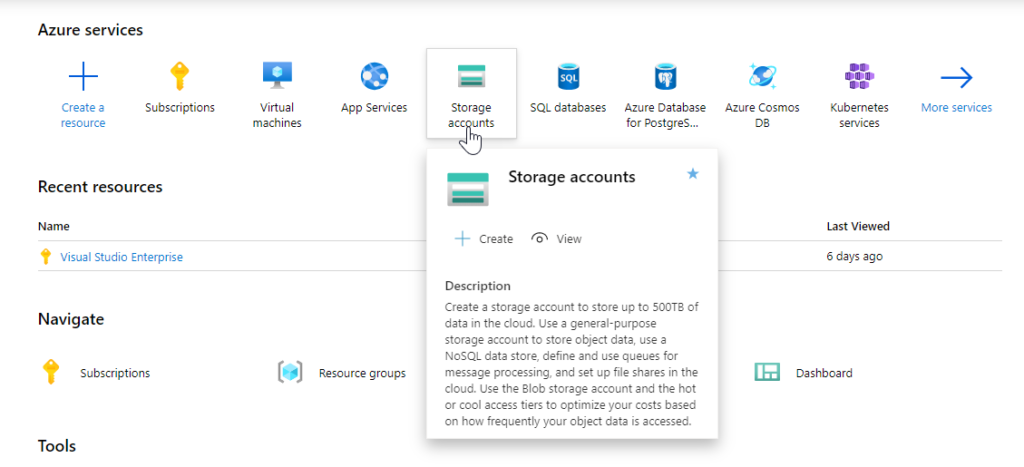
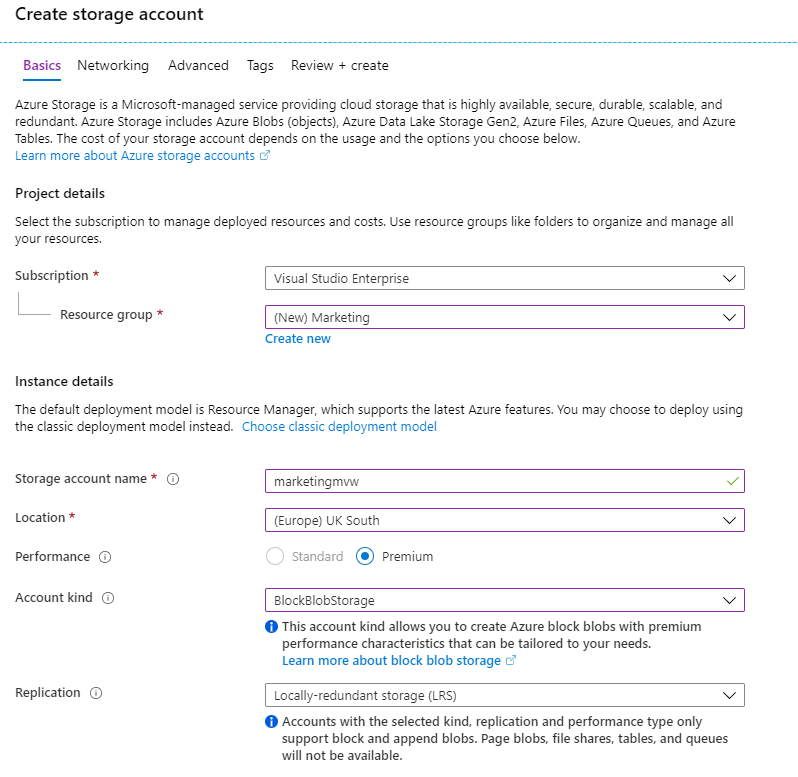
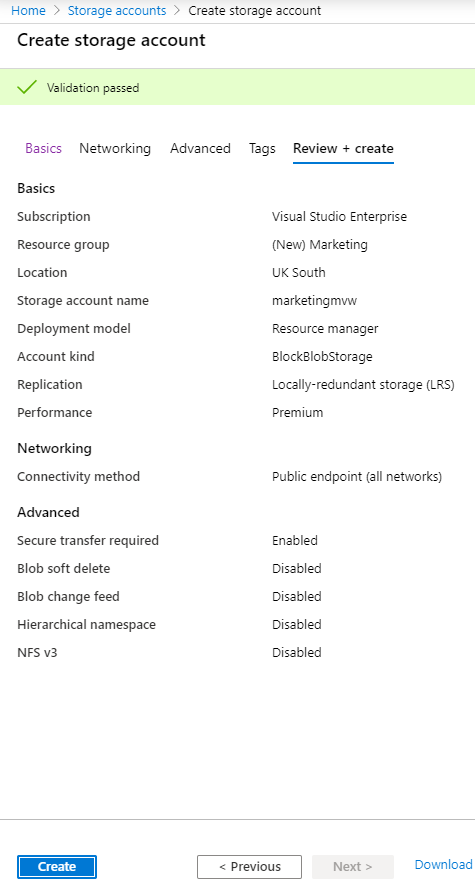

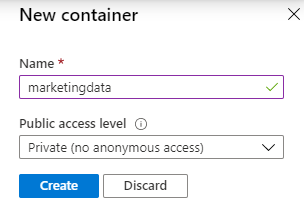
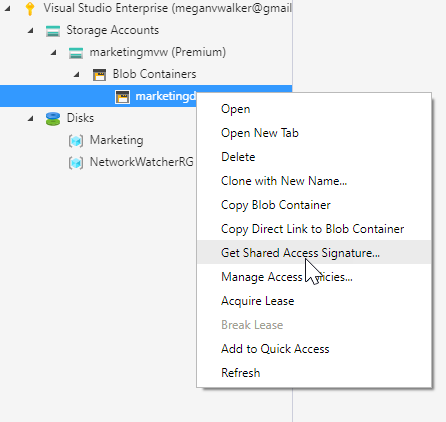
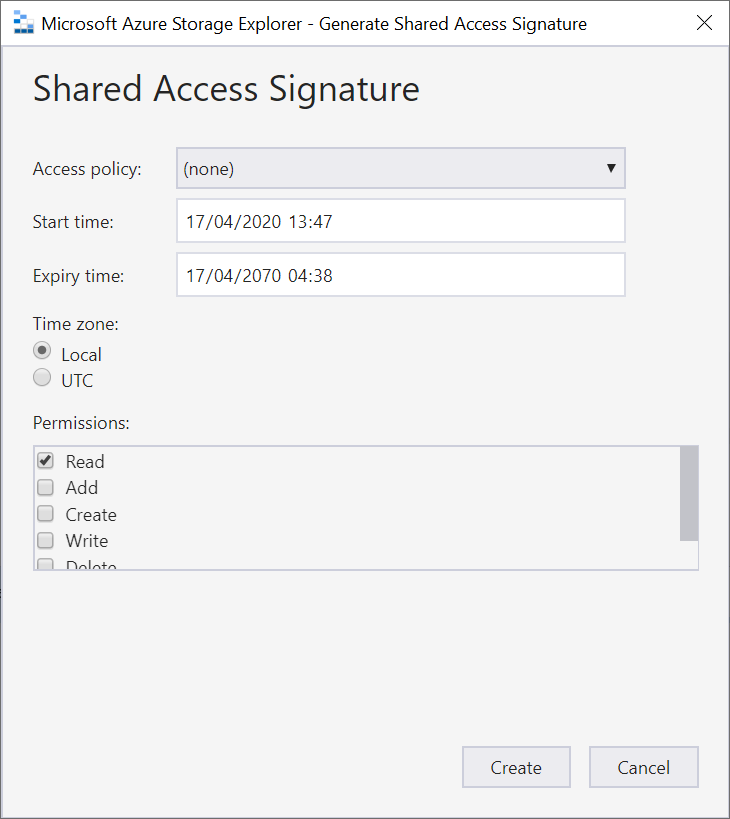

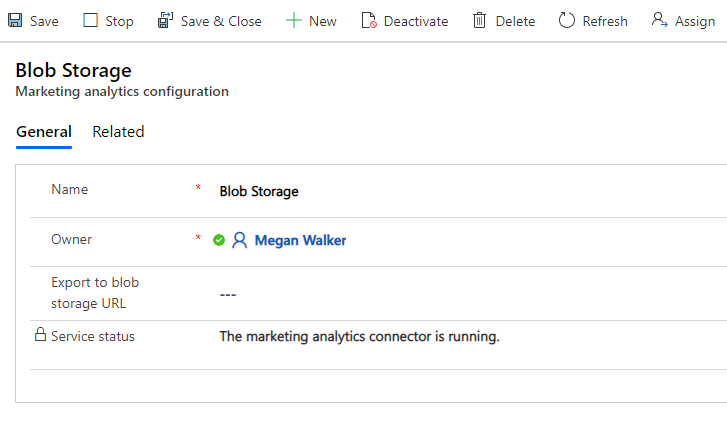
Hi Megan, thanks for the article. I’m trying to set this up in my trial instance. I have an Azure subscription and I created a blob storage. I copied over the shared access signature to the Marketing analytics configuration and tried saving the record. I immediately received the error saying, “Business Process Error: We were unable to start the connector. Can you please help?
Hi Ram, I would try again perhaps later, and see if you still have the same error. If you believe you walked through and set up the blob storage correctly, and you still get the error, I would suggest opening up a support ticket with Microsoft to get some assistance from them. Hopefully, they can help you out!
Thank you Megan 🙂
Megan – I had the same, you need to tick all the permissions boxes and not the screenshot provided 🙂
Ah OK. yes, just the wrong screenshot then! The text says: Set a start and expiry time and then enable all of the permissions. – but I appreciate most people would just look at the screenshot. I will update so it’s clearer!!!
Are you able to run any Power BI reports on anything more than trivial amounts of data with this? I’ve stripped down the reports to an absolute minimum (removed all unnecessary columns etc.) and have just four of the interaction tables for email marketing. Even with this and loading just one month of data it is unworkably slow.
Hi Mo. I do not use D365 Marketing myself so can’t comment on how slow it is to review the data. I am not sure if it’s common when reviewing reports using Azure Blob Storage as the data source. Perhaps one worth posting in the Power BI Community Forums: https://community.powerbi.com/
Hi Megan,
SAS token has expired, and am getting the error:
“The blob storage URL provided specifies a new blob container. To ensure continued data export use the same blob container and only update the SAS token in the blob storage URL. To export data to a different blob container, delete the current configuration and create a new one with the new blob storage URL.”
The blob storage URL specifies the same blob container as we only have one and haven’t changed it.
Any ideas?
Hi Charlie. Not sure if your error is within the marketing app, or somewhere within Azure? Sounds like going to Microsoft Support might be a good idea for this one. I am not an expert on Azure Blob Storage, not even close to having much knowledge, but support should be able to assist.